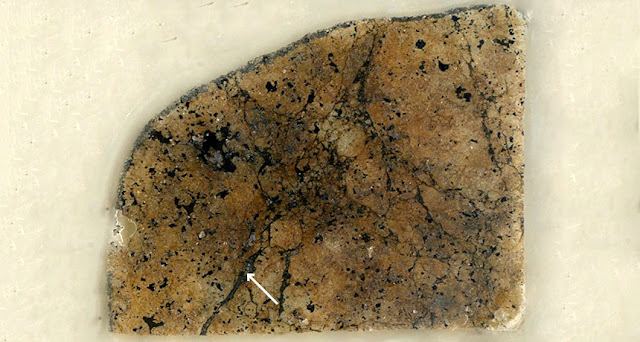One of Earth?s missing minerals found locked inside meteorite
Proposed yet never proven component of crust and mantle found in space debris
The last of a group of dense minerals that make up much of Earth?s crust and upper mantle has been found tucked inside a meteorite that slammed into Australia 135 years ago. The newly discovered mineral, a variety of majorite, is potentially abundant in sinking tectonic plates and could help illuminate the behavior of the deep Earth, its discoverers say.
Each identical component of this mineral contains 32 magnesium atoms, 32 silicon atoms and 96 oxygen atoms arranged in a distorted cube. Natural samples of MgSiO3 tetragonal garnet, the mineral?s scientific moniker, had eluded scientists since the mineral was first artificially produced in 1985.
Naotaka Tomioka, a mineralogist at the Kochi Institute for Core Sample Research in Japan, and colleagues discovered 0.5-micrometer-wide grains of the mineral in a slice of the 19th century meteorite. While many minerals found in meteorites form when slamming into Earth, the new mineral formed in space when two asteroids collided at a relative speed of about 2 kilometers per second, the researchers report online March 25 in Science Advances.
One challenge remains for the researchers: As discoverers of the mineral, they now get to name it.
Researchers identified a previously undiscovered mineral in a meteorite by bouncing electrons off the mineral?s crystal structure. The unique structure (top left) allowed the discoverers to prove the identity of the mineral (dark spot in the center of the image).
Published online Science Advances. March 25, 2016. doi: 10.1126/sciadv.1501725.

